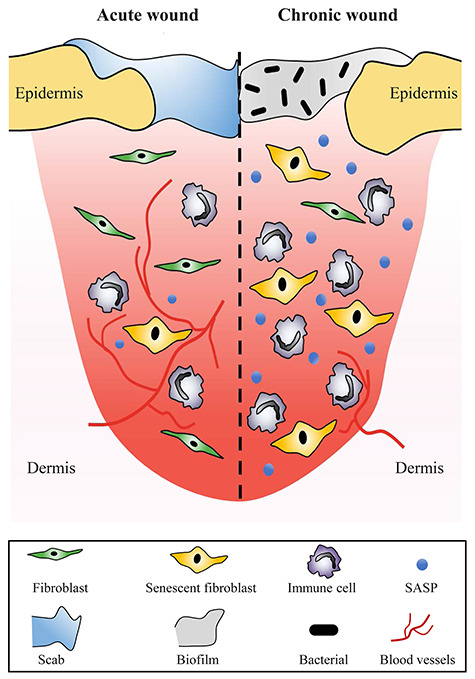Figure 1.

Molecular and cellular differences between chronic and acute wounds. The transient inflammatory response is initiated in the healing process of acute wounds and provides a beneficial environment for re-epithelialization and regeneration. However, chronic wounds stall in the inflammatory phase, leading to persistent inflammation. Chronic wounds exhibit the accumulation of senescent cells and an increased senescence-associated secretory phenotype (SASP) with poor blood vessel infiltration
